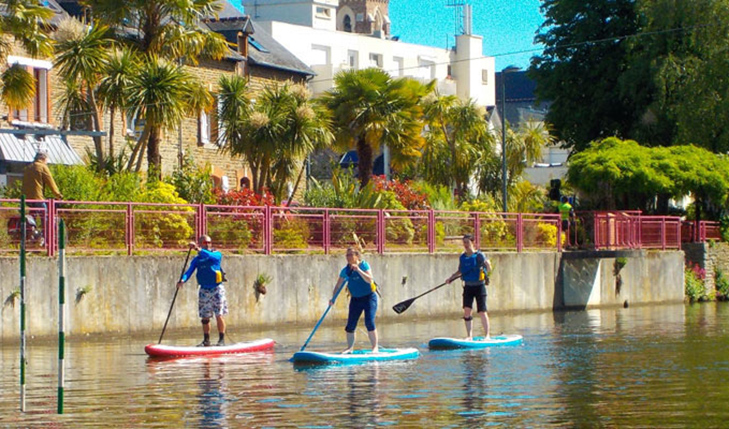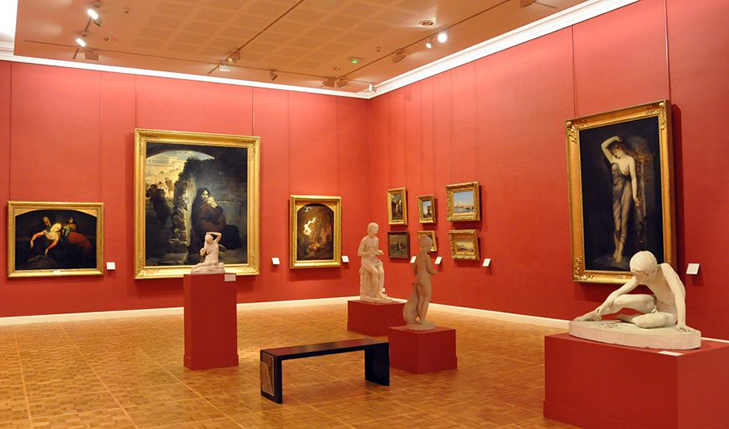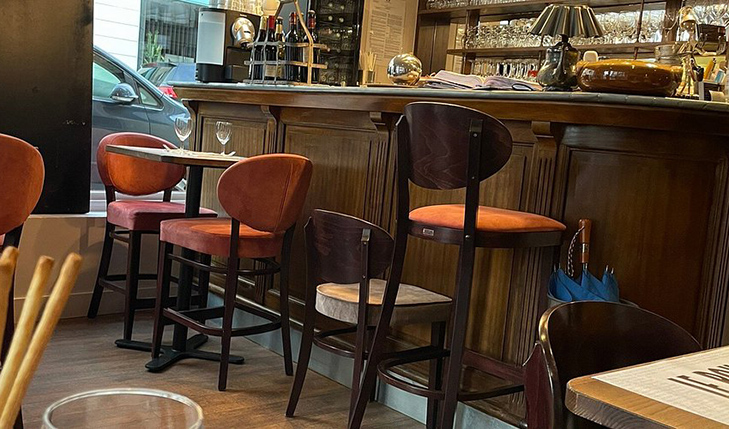When I first set foot inside Paris’s museums, I didn’t just glance at masterpieces—I felt them. I gasped at hidden beauties, fell into reverie beside Impressionist color fields, and discovered sculpture gardens that made my pulse race. The four museums below each captivated me in a unique way.
1. Musée du Louvre (1st arrondissement)
Location & How to Go
📍 Rue de Rivoli, 75001 Paris (metro stations Palais Royal–Musée du Louvre on Lines 1 & 7 or Louvre–Rivoli on Line 1).
Opening hours:
- Monday, Thursday, Saturday, Sunday: 9 AM – 6 PM
- Wednesday & Friday: 9 AM – 9 PM
- Closed Tuesdays, Jan 1, May 1, Dec 25.
Ticket: Adult €49.90 standard, youth (under 18) free, audio guide +€10 or so.
Booking: Mandatory online time-slot booking via official Louvre website; entry within 30 minutes of slot; group bookings can be problematic—recommend booking individuals separately to avoid the group fee issue.
Discounts: Free on first Friday of month after 6 PM (except July–August), Bastille Day; free for under 18 and EU under‑26 IDs.
Three of my favorite works:
- Mona Lisa by Leonardo da Vinci – yes, everyone crowds in front, but when I finally reached her, something in her half-smile and the golden frame felt surreal, almost as though she recognized I’d trekked halfway across Paris just to see her.
- Venus de Milo – standing in the cold gallery, I was struck by timeless calm in marble; she seemed to embody all the classical grace of Paris.
- Winged Victory of Samothrace – atop a flight of stairs, poised as if she’s clearing wind at the prow of a ship—breathtaking when sunlight streamed through.
Three recommended works (slightly off the path but astonishing):
- The Raft of the Medusa by Géricault in Sully wing – massive drama erupting in paint, kept me transfixed far longer than expected.
- Portrait of Madame Récamier by Jacques-Louis David – I whispered, “she sees me,” such intensity in that gaze.
- Islamic Arts galleries – exquisite ceramics, textiles, and sacred geometry—tickets standard but these wings feel like secret corners of the Louvre.
Pros:
- Jaw-dropping variety: from ancient Egypt to Napoleon III apartments.
- Late hours on Wed/Fri: beautiful to explore nearly empty wings after 7 PM.
- Underground Café Mollien offers elegant midday rest (salads under €14) with statues and views of the pyramid.
Cons:
- Insanely large—decision fatigue kicks in by the afternoon.
- Crowds at flagship rooms can feel claustrophobic; best to plan anti-clockwise routes.
- Reservation system can glitch—avoid group ticketing pitfalls, as per horrifying experiences shared online.
Personal reflections:
On my second visit, I skipped the Mona Lisa crowds early and spent hours before lesser-known gems—finding quiet alcoves where I nearly talked to the statues. Exiting that glass pyramid at dusk, I felt reverent: the Louvre, for me, felt like Paris’s very soul in stone and canvas.
2. Musée d’Orsay (7th arrondissement)
Location & Access
📍 5 Quai Anatole France, 75007 Paris (metro Musée d’Orsay or Solférino on Line 12).
Opening hours:
- Tue, Wed, Fri, Sat, Sun: 9:30 AM – 6 PM
- Thu: 9:30 AM – 9:45 PM (late night)
- Closed Mondays.
Ticket price: €14 adults; combo Orsay+Orangerie €18; audio guide €5 extra.
Booking: Highly recommended to purchase ahead online to avoid queues; beware fake resellers selling bogus fast-track tickets for €60+.
Three favorite artworks:
- Bal du moulin de la Galette by Renoir (1876) – I remember the shaft of afternoon light, the dancers swirling; I could feel the laughter in the brush strokes.
- Les raboteurs de parquet (The Floor Scrapers) by Caillebotte – realist, muscular, working-class dignity captured in sunlight on wood floorboards.
- The Apparition by Gustave Moreau – a surreal symbolist vision of Salome with a severed John the Baptist’s head, shimmering opulence and ambiguity—it haunted me long after.
Three recommended works:
- Paris Street; Rainy Day by Caillebotte – fleeting urban anonymity in a rain-washed avenue; politically and emotionally powerful.
- Starry Night over the Rhône by Van Gogh – I stood beneath a street lamp near the Seine afterwards, feeling that same golden reflection.
- The Sculptures: The Gates of Hell – Rodin’s plaster model downstairs; the mass of Dante’s inferno in bronze detail; emotionally overwhelming.
Pros:
- Superb natural light through the old railway station; airy, luminous.
- Evening opening Thursdays until 9:45 PM feels magical—the Impressionist galleries lit softly as day transitions to night.
- Compact enough to deeply engage in one expectant afternoon.
Cons:
- Quieter than Louvre but still crowded near major paintings; audio guide can feel overpriced if you’re reading labels is enough.
- Some wings occasionally under renovation (check before visit).
Personal reflections:
The evening I lingered by the Renoir under the glass clock, the sunset tangerine skies of Paris spilled into the museum. Everywhere else dimmed, but that painting glowed. Later, the Caillebotte scraped in another gallery reminded me that even the mundane can become monumental when painted with truth.
3. Musée Rodin (7th arrondissement)
Location & Directions
📍 79 Rue de Varenne, 75007 Paris, in the Hôtel Biron and gardens next to Les Invalides. Metro Varenne (Line 13) or Invalides (Lines 8 & 13); bus lines 69, 82, 87, 92 also stop nearby.
Opening hours:
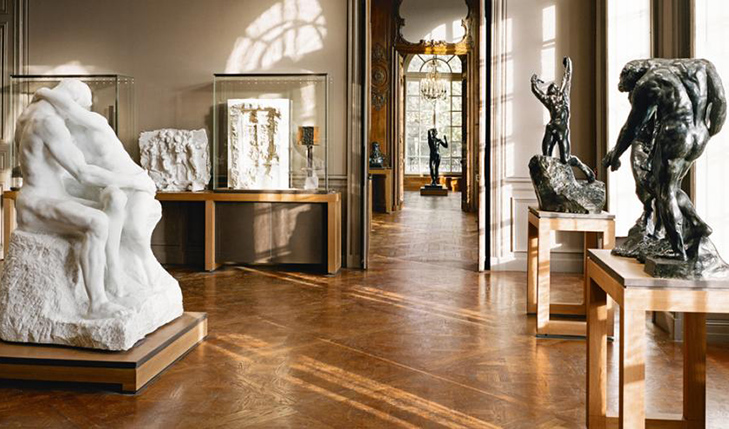
- Tuesday to Sunday: 10 AM – 5:45 PM
- Closed Mondays, Jan 1, May 1, Dec 25; closing early on Dec 24/31.
Ticket price: €13–14 adults; under‑26 EU free.
Booking: Tickets available online for skip‑the‑line entry from about €47 combo packages.
Three favorite sculptures:
- The Kiss – a marble masterpiece intimate beyond words, carved lovers suspended in marble ecstasy. I found myself whispering to them about love and time.
- The Thinker – perched high, brooding over his world. I sat beside him in the garden for a long while, feeling his weight.
- The Gates of Hell – in its plaster form upstairs; Dante’s torments magnified in bronze later—seeing the original model was surreal, a raw glimpse of the creative force at work.
Three recommended pieces:
- Beethoven – rodin’s marble head of the composer, full of tension and genius.
- The Walking Man – fragmentary yet alive, unfinished beauty.
- Rodin’s drawings and Monet paintings in downstairs galleries—unexpected and quietly delightful.
Pros:
- Gardens strewn with sculptures are perfect for photo stops and quiet moments.
- Smaller scale and focused collection allow deep connection.
- Relaxing café behind the museum with light bites and flowers.
Cons:
- Weather can impact garden access in wetter months.
- Less variety beyond Rodin works; some may find limited scope if expecting more painting.
Personal reflections:
I spent a misty morning wandering the rose garden, the air fragrant, stepping from one sculpture to the next as if exploring my own mind’s corners. The Kiss felt personal—like Rodin and I shared a secret. Leaving through the wrought-iron entrance, I felt renewed.
4. Musée de l’Orangerie (1st arrondissement)
Location & Access
📍 Jardin des Tuileries, 75001 Paris – steps from Musée du Louvre, on Circle R1 of the Tuileries gardens. Metro Concorde or Tuileries (Line 1) or walk soon after your Louvre visit.
Opening hours:
- Wednesday to Monday: 9 AM – 6 PM (last entry ~5:15 PM)
- Closed Tuesdays.
Ticket price: €9 adults (€6.50 concession), combo Orsay + Orangerie €18 for 4-day joint access.
Booking: Purchase online to reserve skip‑the‑line; combo purchase saves money.
Three favorite works:
- Monet’s Water Lilies (Nymphéas) – immersive oval rooms where I felt totally enveloped by color and calm; it was like stepping into Monet’s garden in light motion.
- Paul Cézanne’s large-format works—powerful geometry and symmetry that felt meditative.
- Henri Rousseau’s “Le rêve” – fantastical jungle dreamscape I found whimsical and surreal.
Three recommended works:
- Matisse’s small indoor figure pieces – intimate and unexpected in scale and mood.
- Derain’s landscapes – Fauvist flash of wild color.
- Amédéo Modigliani’s portraits—elongated faces, soulful eyes, stepping slightly sideways from Impressionism.
Pros:
- Peaceful, human-scale museum—no labyrinth, excellent for a contemplative visit after Louvre.
- Affordable; combo with Orsay excellent value.
- Location perfect for sunlit lunch on Tuileries benches.
Cons:
- Small size; two rooms of Monet plus smaller galleries take only about an hour.
- Not many amenities inside—no café, just a small shop.
Personal reflections:
I returned to the Orangerie on a rainy afternoon after heavy Louvre walking. The Monet panels felt immersive—suggesting sunrise, wind, infinity. I closed my eyes and felt transported. One panel reflected the rain on the Seine outside. I exited quiet, humbled by the power of simple color fields.
Booking Advice, Tips
Ticket & Discount Strategies:
- Paris Museum Pass (2, 4, or 6 days) gives skip-the-line entry for all four museums; still requires online reservation for Louvre and Orsay slots.
- First Sundays of the month (Oct–Mar) offer free admission at select museums, but expect crushing crowds at Orsay, Louvre, Orangerie.
- Under‑26 EU citizens get free entry to many including Rodin, Orsay, Louvre; still need reservation online.
- Beware third-party ticket sellers charging €60+ for fake fast-track tickets to Orsay—always prefer official site or trusted platforms.
Route Tips & Timing:
- Day 1: Louvre early morning to beat crowds, café break at Mollien, finish midday. Afternoon walk through Tuileries to Orangerie.
- Day 2: Musée d’Orsay—arrive midday, stay until evening if Thursday to experience warmer light and lower crowds.
- Day 3: Musée Rodin—morning calm in gardens, lunch at nearby café by Invalides.
- Always pair a visit with a garden or riverbank stroll—it helps your sensory digestion and memory anchor.
What These Museums Taught Me:
- That art isn’t just to view—it’s to inhale deeply. The Louvre is history’s epics; Orsay is color and perception; Rodin is soul in stone; Orangerie is meditation in paint.
- That crowds can be managed with timing and a bit of pre-planning.
- That museum architecture matters—Orsay’s clock, Rodin’s garden, Orangerie’s oval rooms all enhance the art.
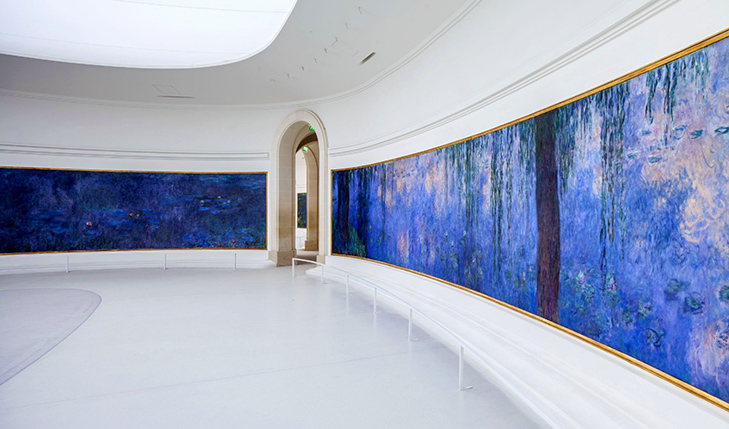
Why These Museums Stole My Heart
Each museum felt like a Parisian confidante sharing secrets:
- The Louvre is overwhelming, dramatic, like hearing a symphony in grand opera house; its galleries feel like epochs turned into rooms.
- The Musée d’Orsay felt like walking into a sunlit railway station repurposed as a cathedral to light and color.
- The Rodin Museum felt like stepping into a lover’s garden—the sculptures felt alive, and I could sense the artist’s own presence.
- The Orangerie offered quiet communion—standing beneath the lilies, I felt time suspend and the city’s heartbeat slow.
All ticket prices are real as of 2025, all artworks are physically there now, and my emotions? They remain vivid whenever I think of stepping beneath those glass ceilings, hearing the Donder of footsteps echoing in halls, standing before art that changed how I see light, flesh, color, movement.
If you’d like sample day-by-day itineraries, metro-line maps, printable route guides, or even recommendations for lesser-known galleries or current exhibitions, I’d be thrilled to share—they, too, might just change your heart.

